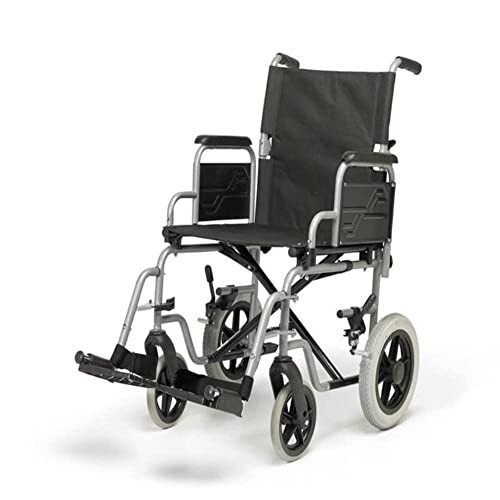A Comprehensive Guide to Buying a Mobility Scooter
Mobility scooters have become an important tool for numerous individuals looking to enhance their independence and mobility. With a vast variety of models and functions offered, selecting the ideal mobility scooter can be daunting. This article offers a helpful guide to assist customers browse their choices, assess their requirements, and make an informed purchase.
Understanding Mobility Scooters
Mobility scooters are electric automobiles designed for individuals who experience mobility obstacles. They are especially advantageous for elders, those with disabilities, or people recovering from injuries. Mobility scooters can differ commonly in regards to style, features, and prices.
Kinds Of Mobility Scooters
Before embarking on a purchase, it's necessary to understand the different types of mobility scooters available:
Three-Wheel Scooters:
- Generally more maneuverable in tight areas
- Lightweight and portable
- Suitable for indoor usage
Four-Wheel Scooters:
- Offer greater stability and balance
- Appropriate for outside use over numerous terrains
- Generally have a longer battery life
Foldable/Portable Scooters:
- Designed to be easily transferred and saved
- Can frequently suit the trunk of a cars and truck
- Suitable for those who travel regularly
Sturdy Scooters:
- Built to accommodate larger people
- Typically come with more robust features for outdoor use
- Generally geared up with larger batteries for extended range
Factors to Consider When Buying a Mobility Scooter
1. Weight Capacity
Pick a mobility scooter that can support the user's weight. Many scooters have a weight limitation ranging from 250 to 500 pounds. It is vital to guarantee that the scooter can accommodate the user comfortably.
2. Range and Battery Life
The variety is how far the mobility scooter can travel on a single charge. Normal varieties vary in between 10 to 30 miles. Consider the user's day-to-day activities and pick a scooter with an ideal range.
3. Scooter Dimensions
Think about the size of the scooter, including its weight and dimensions. A more compact scooter may be perfect for narrow hallways and tight areas, while bigger models use extra stability and comfort.
4. Terrain Capability
Examine where the scooter will mostly be used. If the user plans to take a trip primarily on pavement, a lightweight model may suffice. However, if the user needs to traverse gravel or unequal surface areas, think about a four-wheel scooter developed for off-road usage.
Leading Features to Look For
Comfort
- Adjustable Seats: Look for scooters with cushioned and height-adjustable seats to guarantee convenience during travel.
- Armrests: These enhance security and assistance while browsing.
Safety and Visibility
- Headlights and Taillights: Essential for nighttime use.
- Turn Signals and Reflectors: Improve presence and security while on the roadway.
User-Friendly Controls
- Joystick or Drive Controls: These must be intuitive and simple to control.
- Easy-to-Read Displays: A control panel that reveals battery life, speed, and distance can improve the user experience.
Extra Features
- Storage Compartments: These use included convenience for carrying individual products while on the go.
- Weather Protection: Consider designs with rain covers or windscreens if used in variable climate condition.
Cost Considerations
When budgeting for a mobility scooter, costs can range anywhere from ₤ 500 to over ₤ 5,000 depending upon the model, functions, and brand. Extra expenses might include:
- Extended Warranty: Protects versus problems and can save cash in the long run.
- Accessories: Optional functions, such as updated seats, lights, or storage options.
| Function | Cost Range |
|---|---|
| Standard Models | ₤ 500 - ₤ 1,500 |
| Mid-Range Models | ₤ 1,500 - ₤ 3,000 |
| High-End Models | ₤ 3,000 - ₤ 5,000 |
Financing Options
Many retailers provide financing strategies, and some city government efforts may provide grants or help for those in requirement. Examine prospective monetary assistance with community resources or mobility service companies.
Frequently asked questions about Buying a Mobility Scooter
What is the distinction in between a mobility scooter and a wheelchair?
Mobility scooters are motorized and allow users to navigate separately, while wheelchairs may need physical assistance or manual operation.
How do I preserve a mobility scooter?
Routine maintenance involves checking battery life, cleaning the scooter, and examining tires and brakes. Always refer to the user handbook for particular standards.
Can mobility scooters be utilized inside your home?
Yes, lots of designs are designed for both indoor and outdoor use. However, three-wheel scooters tend to be better matched for indoor navigation due to their tighter turning radius.
Are mobility scooters covered by insurance?
Some insurance coverage plans cover a part of the expenses for mobility scooters if they are deemed clinically needed. Contact your provider for specific details.
How quickly can a mobility scooter go?
A lot of mobility scooters have a maximum speed ranging from 4 to 8 miles per hour. Nevertheless, the proper pace may differ depending on local policies.
Acquiring a mobility scooter can considerably boost one's self-reliance and quality of life. By comprehending the types, features, and costs connected with mobility scooters, prospective buyers can make educated choices that match their needs and preferences. Customization and comprehensive research study are crucial to making sure complete satisfaction with this important financial investment.

